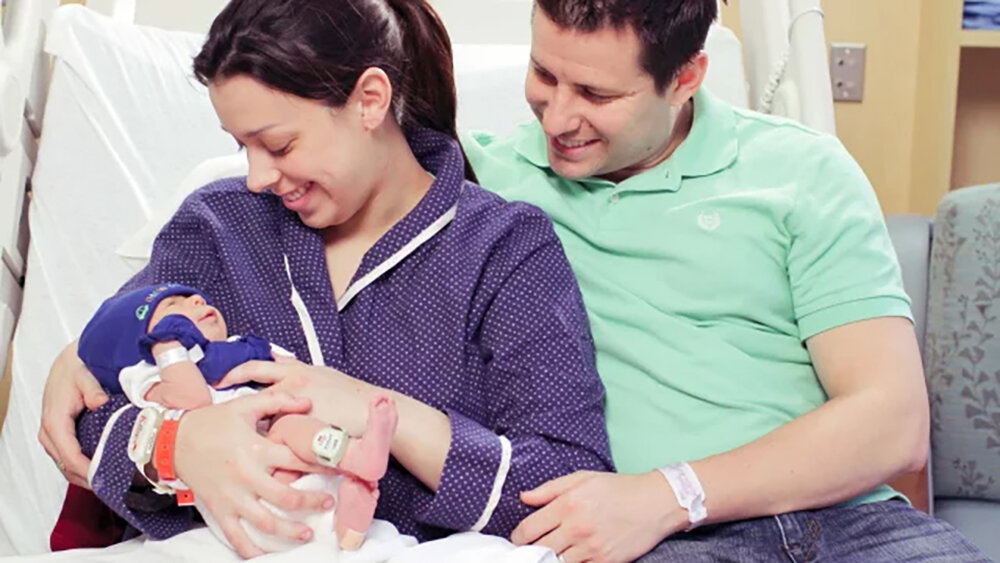Hospital Security: Identification and Safety Systems for Infant Protection
The official definition of hospital “infant abduction” is the removal from the premises of a child less than six months of age by a non-family member. It’s called a Code Pink, and though rare, it is as terrifying as you might imagine. Preventing and preparing for Code Pink incidents is an ongoing challenge for pediatric healthcare facilities, but hospitals can be proactive with identification and safety technology designed for infant protection.
Infant abduction in hospitals: rare but real
The Joint Commission considers infant abduction a sentinel event occurring in only 0.5% of all adverse hospital-related events reported each year. But the trauma felt by the family, hospital, and local community lingers. Between 1983 and 2004, 116 infants were abducted from hospitals. While not a statistically significant number, the nature of infant abductions makes the risk a high priority for hospital security teams and healthcare professionals.
The National Center for Missing & Exploited Children analyzed cases of hospital infant abductions to provide a description of a typical abductor. While not a guarantee, typical profile characteristics include:
Female of childbearing age
May appear pregnant
Compulsive, deceptive, and/or manipulative
Claims to have lost a baby or be incapable of having one
Resides in or near the community
Familiar with healthcare staff and may impersonate them
Well-informed about staff routines and procedures
Hospital infant abductors don’t usually target a specific infant. Instead, they typically make reconnaissance visits to facilities in search of an opportunity. Abductors take advantage of a hospital’s open environment — in which staff, patients, family members, visitors, and vendors move about freely all day every day, and “make these facilities nothing less than a security nightmare from the perspective of both law enforcement and security professionals.”
Switched at birth? Frequency and consequences of infant misidentification
Infant abduction is among the most dramatic results of security gaps in hospital protocols, but it is not the only potential consequence for infants and their families. “Switched at birth” sounds as horrific as abduction, but there are more frequent patient-care errors arising from infant misidentification.
Most hospitals still use the naming convention “Baby Boy X,” with the last name signifying the parents or guardians of the infant. This can lead to confusion when infants have the same last name and/or similar patient record numbers. Since babies cannot talk, patient identification is more challenging to confirm. Potential consequences include:
Procedures performed on the wrong patient
Nursing infants given formula
A mother’s expressed milk fed to the wrong infant
Recommendations to address identification errors involve distinct naming conventions and the use of hospital bands with barcodes or RFID tags to verify patient identifiers. Best practices for infant protection in hospitals demand a multilayered approach.
Technology and infant security
Nursing2021 suggests the following procedures for protecting infants in healthcare facilities:
Identify infants with RFID hospital bands directly after birth.
Integrate technology with security systems to trigger alarms, lock doors, and stop elevators during a Code Pink.
Take footprints, record physical characteristics, and photograph infants within two hours of birth.
Require staff to wear — and conspicuously display — updated, color-photo ID badges.
Control access to the maternity unit and monitor with real-time video surveillance.
TRL Systems is proud to partner with STANLEY Healthcare’s Hugs® Infant Protection, the number one infant security protection and identification solution in the world. Advanced technology makes infant tagging devices smaller and lighter. Security system integration provides real-time location and identification of infants in healthcare facilities, and cut-band detection deters abductors and issues rapid alerts in the event of a Code Pink.
TRL Systems integrates Hugs® Infant Protection technology into existing facility security and control processes, including building access, staff and nurse call, overhead notification systems, alarming devices, and lockdown protocols. Integration is key to maximizing the efficiency of healthcare security systems and ensuring rapid response.
For proactive infant protection with proven technology, contact sgranillo@trlsystems.com today.



